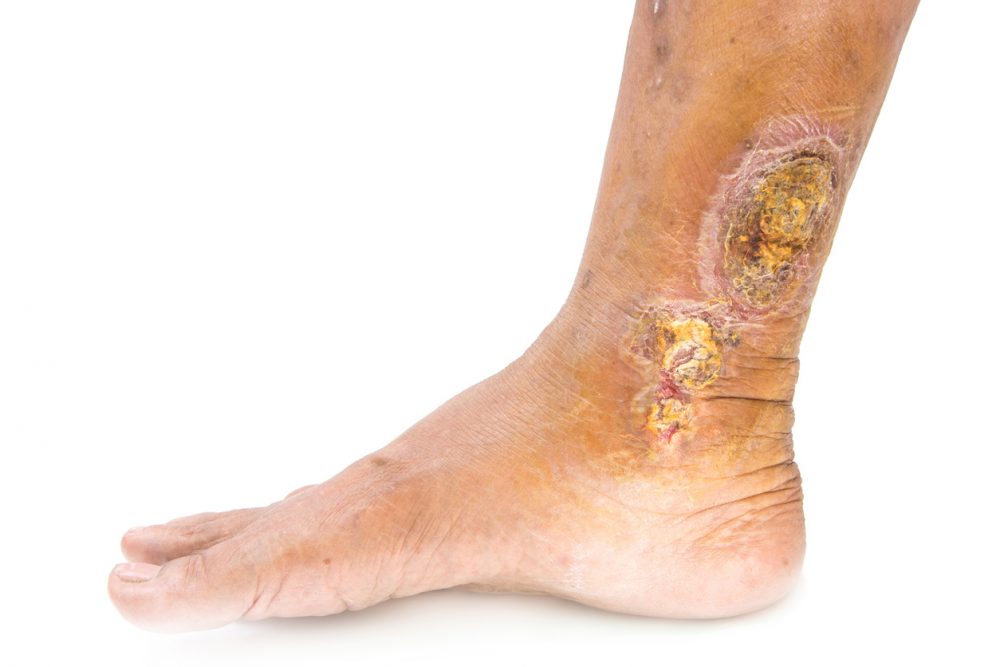
Average Cost of leg ulcer Surgery in Gudivada
A leg ulcer is an abnormal connection between the artery and a vein. The cost of leg ulcer Surgery depends upon multiple factors and ranges from Rs. 35,000 to Rs. 1,55,000 in Gudivada.
This connection can be created surgically for hemodialysis or may be congenital. If it is created congenitally, then the treatment option is decided by the surgeon.
The cost varies depending on the type of treatment performed. Varicose veins surgery without laser costs between INR 1,80,000 to 2,20,000. Vascular veins laser treatment cost is between 1,00,000 to 1,40,000. The average cost of the surgery changes based on the type of room opted for—general, sharing, or private
What is a leg ulcer?
A leg ulcer is simply a break in the skin of the leg, which allows air and bacteria to get into the underlying tissue. This is usually caused by an injury, often a minor one that breaks the skin.
For most people, such an injury easily heals in a week or two. However, if there is an underlying problem, the skin will not heal and the area of breakdown may increase in size. This is a chronic leg ulcer.

What Causes leg ulcers?
The most common underlying problem that causes chronic leg ulcers is leg vein disease. Venous disease is the main cause of more than two-thirds of all leg ulcers.
- Venous disease (caused by non-functioning veins) – approximately 80% of leg ulcers
- Arterial disease (caused by non-functioning arteries) – about 15% of leg ulcers
- Other causes (including diabetes and rheumatoid arthritis, and some rare diseases) – about 5% of leg ulcers
- In some cases, two or more conditions can cause harm at the same time. Your doctor will examine you and do some tests to see what type of ulcer you have. The following guidelines apply to venous ulcers and may not be suitable for other types of ulcer.
How does venous disease Cause Ulcers?
The veins in your leg are tubes that carry blood from your foot back to your heart. The veins in your legs have one-way valves that make sure blood flows over the leg and not back down. In some people, these valves are not very effective or can be damaged by thrombosis (blood clots) in the veins. If the valves are damaged, blood can flow into the veins and cause very high pressure in the veins when you stand. This abnormally high pressure in the veins damages the skin and leads to ulcers.

How am I treated?
Treatment of a venous leg ulcer is done in two ways:
- Control of the high pressure in the leg veins
- Treatment of the ulcer
The main pillars of treatment are compression bandages or stockings and the lifting of the extremity:
Elevation of the extremity
The higher the leg, the lower the pressure in the leg veins. When the foot is lifted above the heart, the pressure in the foot drops to normal levels. Put your legs up whenever you can and as high as you can – the armrest on the sofa is good. Raise the bottom of your bed (6 inches or so) so that your feet are slightly higher than your head in bed. You can use some old books for this.
Compression bandage or stockings
To keep the pressure in the leg veins on the ankle low when standing, you will be treated with compression bandages or stockings. Multiple layers of dressing may be required to provide the pressure needed to control the veins. Once the ulcer has healed, compression stockings are usually needed to prevent the ulcer from coming back. These stockings have to be specially adjusted and are much stronger than ordinary “support tights”. If you have trouble putting on your stockings, you can purchase a special stocking applicator.
Associations
The nurse will use different dressings under the bandages depending on the condition of the ulcer. These dressings can change as the ulcer progresses
Surgery
Very occasionally, the largest or very resistant ulcers may require either a skin graft or surgery on the veins. If your ulcer is due to varicose veins, they can be treated, usually once the ulcer has healed.
How long does it take for the ulcer to heal?
It usually took many years for venous disease to cause the ulcers. It is therefore not surprising that the ulcers can take a long time to heal. Although most venous ulcers heal in 3-4 months, a small serving takes significantly longer. Do not despair! Even in these resistant cases, treatment will ultimately be successful.
How can I stop the ulcer from coming back?
Once your ulcer is healed, it doesn’t mean your problems are over. Even though the skin is intact, the underlying problem with the veins remains and you need to take precautions to prevent the ulcer from recurring:
- Always wear compression stockings (or bandages in some severe cases) during the day.
- Raise your legs whenever possible.
- Keep the skin in good condition by using plenty of moisturizer to prevent dryness.
- Weight loss, fresh fruit, exercise, and smoking cessation are also important in healing your ulcer and improving your overall health.
Leg Ulcers treatment cost Gudivada , Leg Ulcers surgery cost Gudivada
